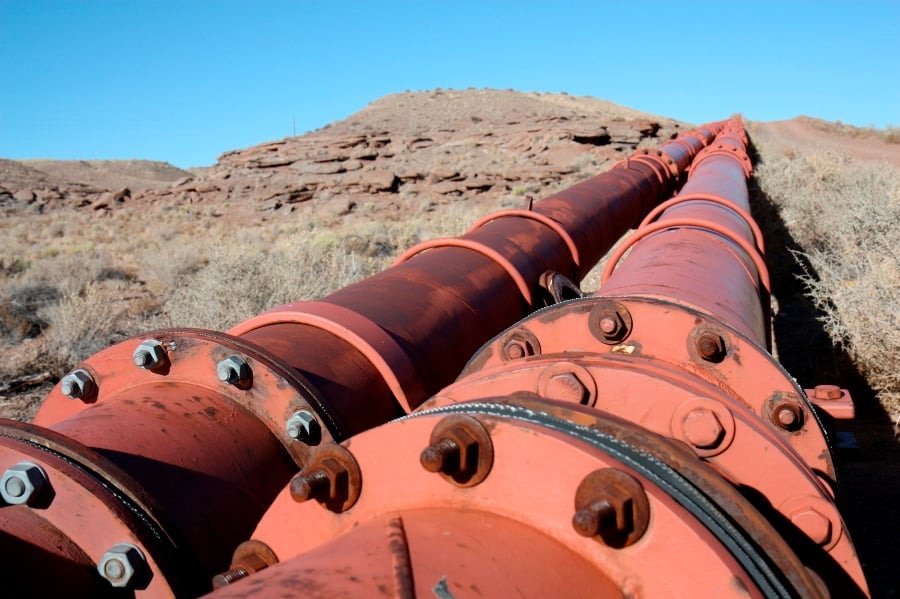West Texas intermediate crude oil hit $50 a barrel Thursday, a 92% gain from a Feb. 11 bottom.
But how well your client's mutual fund or exchange-traded fund fared in oil's 2016 rally depends on how badly it got clobbered in its epic collapse.
WTI made its most recent peak on June 20, 2014 at $107.95 a barrel. From top to bottom, black gold turned to black plague, clocking a 75.7% loss on fears of oversupply from Saudia Arabia and the U.S. Those
fearshave abated in recent weeks, pushing up the price of crude.
The best investment for those lucky or prescient enough to have bought on Feb. 11: iPath S&P GSCI Crude Oil Total Return Index ETN (OIL) was the best bet. It has pumped out a cumulative 81.9% gain, according to Morningstar, the Chicago investment trackers. The top-performing ETF was United States Oil (USO), up 51.2%.
Both aim to replicate the price moves in WTI. The difference: The iPath product is an exchange-traded note, whose value reflects an index — in this case, the S&P GSCI Crude Oil Total Return Index. United States Oil, in contrast, invests in futures contracts, and that's one reason why the two products with the same objective have such different results. The fund's results depend on the futures market and rolls expiring contracts into new ones. In a sharply rising market, this can lead to underperformance.
But oil ETFs are certainly not the only oil play available. In the first three months of 2016, the energy sector posted its first quarter of negative earnings since Standard & Poor's began collecting data in 1999. Oil equities, such as Apache (APA) and ExxonMobil (XOM) got crushed by falling crude prices. From oil's peak to trough, Morningstar's U.S. equity energy index fell at an annualized 30.47%.
Not surprisingly, the top-performing equity energy ETFs in the recent rebound got clobbered when oil fell. Van Eck Unconventional Oil & Gas ETF (FRAK) fell an annualized 47.97% during crude's tumble, and rebounded a cumulative 47.52% when oil recovered. SPDR S&P Oil & Gas Exploration & Production ETF (XOP), up 46.78% during the oil rally, fell at an annualized 52.16% rate when oil was pumping mud.
Funds that invest in
oil and gas pipelines also got their pipes cleaned in the oil rout, despite the widespread belief that energy MLPs wouldn't feel the pain. Alerian MLP ETF (AMLP), the largest energy master limited partnership fund, lost an annualized 35.44% during oil's rout, but rebounded a cumulative 49.83% since its bottom.
What can fund investors take away from oil's wild ride?
Big losses are tough to recover from. Consider the top-performing exchange-traded investment, iPath S&P GSCI Crude Oil Total Return Index ETN. Its 81.9% cumulative gain since Feb. 11, 2016 looks mighty impressive. But its round-trip performance from oil's 2014 high to today is an annualized 50.92% loss. The fund lost at a 70.73% annual rate during oil's decline.
Commodities are insanely difficult to predict. The Wall Street Journal's 2014 economic forecasting survey predicted oil at $95 at the end of the year. The U.S. Energy Information Administration gave a range of $159 to $70, which is wide enough to drive an oil tanker through, but it still wasn't wide enough.
Active management can sometimes help. Tortoise North American Energy Independence (TNTPX) gained a cumulative 43.11% during oil's rise, greasing the Morningstar U.S. Energy index's gain of 26.28%. For the round trip, however, the fund was down an annualized 22.46%, vs. 17.02% for the index.
Social investing shines when oil is punk. It's tough to invest in oil if you've got concerns about the environment, and many social investment funds are light on conventional energy. Calvert Global Energy Solutions (CGAEX) has fallen at an annual rate of 11.21% since oil's peak, giving it the best performance for actively managed funds.
Bargain hunting can pay. Some of the top-performing actively managed funds since oil bottomed invest in energy MLPs. Highland Energy MLP, for example, is up a cumulative 86.62% since Feb. 11, more than double the Morningstar MLP Composite index. As with all things value, timing is everything. The fund plunged at an annualized 62.04% rate during oil's downfall.
The biggest lesson: You should have a good reason for putting your client in any highly specialized sector. Commodities have traditionally been viewed as a way reduce volatility in an equity portfolio, and as an inflation hedge as well. But you'd better have good instincts, as well as tight stop-loss positions, if you're just trying to add performance in oil or any other sector.







